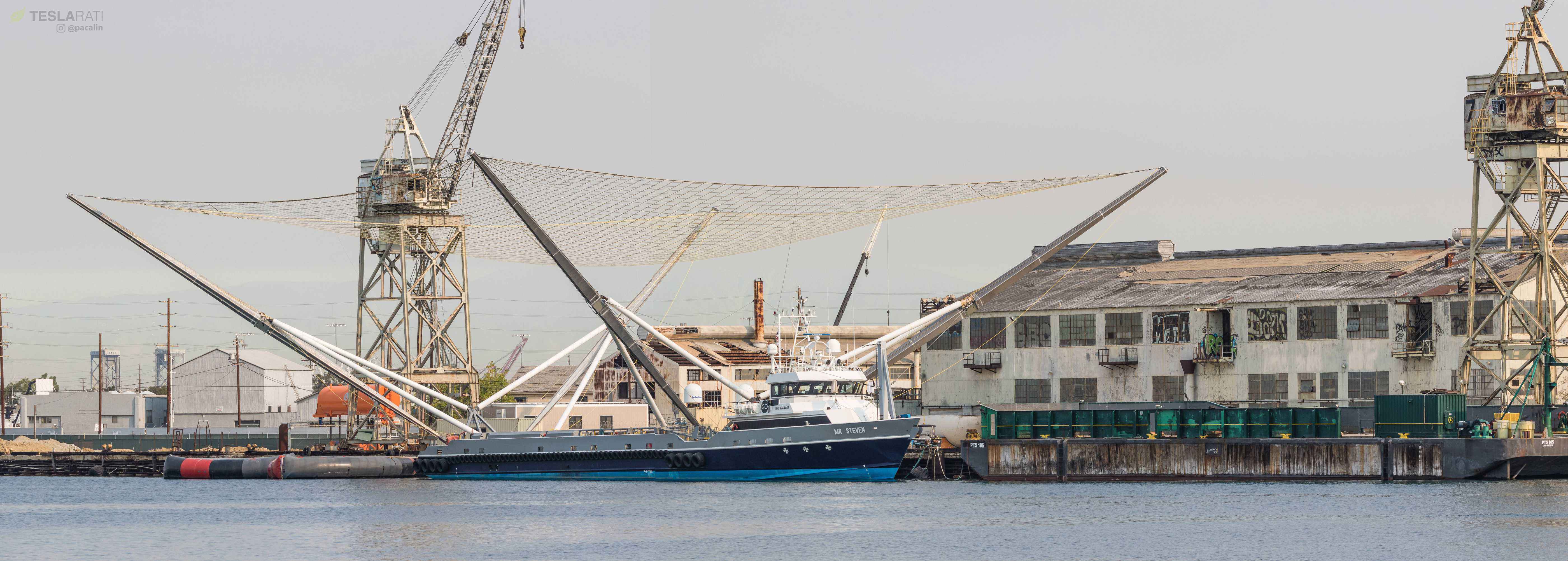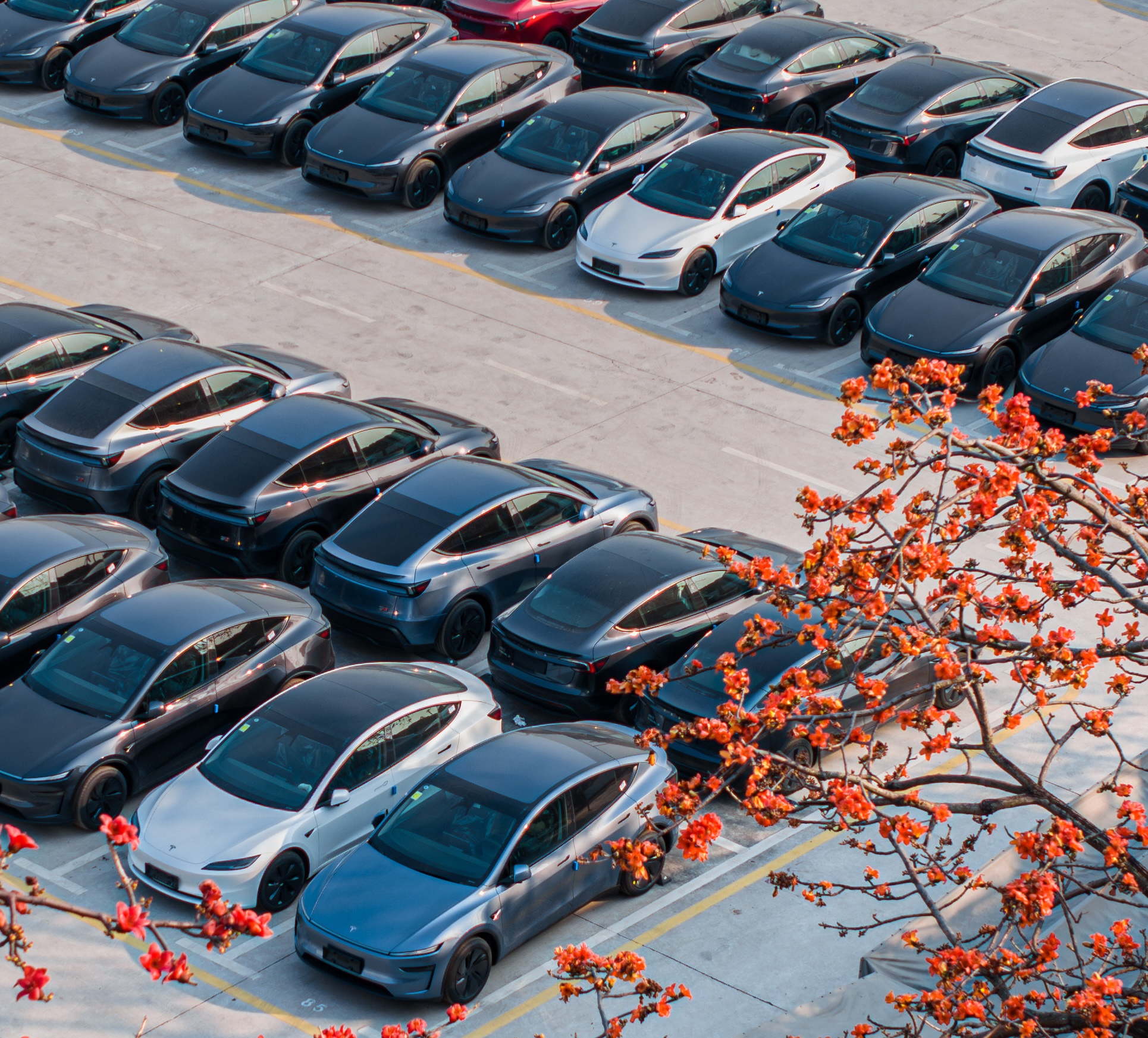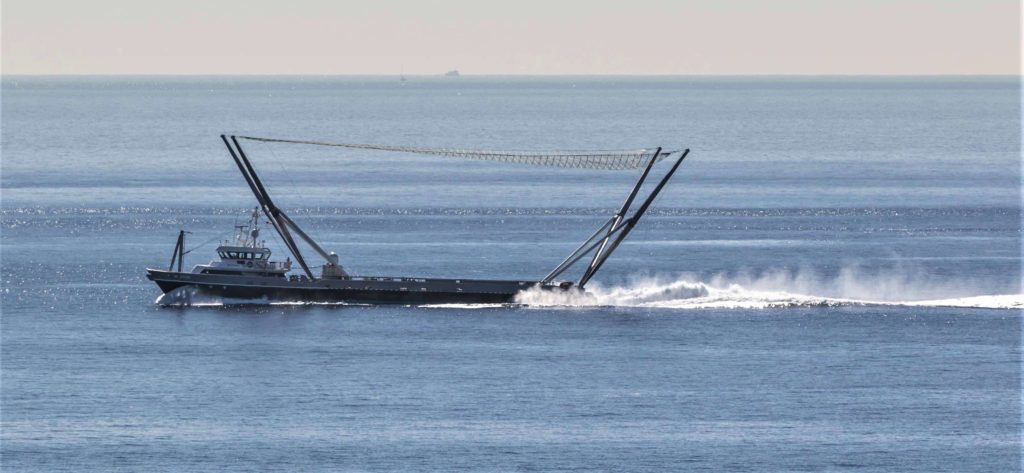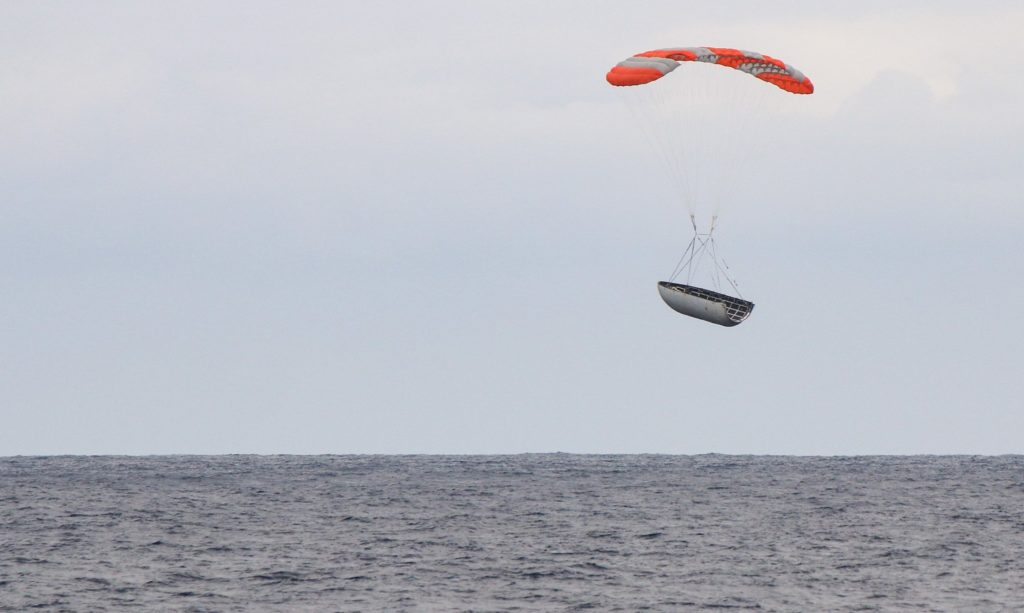

News
SpaceX fairing recovery vessel Mr. Steven’s owner abruptly files for bankruptcy
The legal owners of SpaceX’s sole fairing recovery vessel are in dire financial straits, signaled by business owner Steven Miguez’s decision to file for bankruptcy as a last chance of protecting Seatran Marine, a company which owns and leases eight utility vessels known as crew boats.
Mr. Steven, leased by SpaceX in late 2017, is one of those crew boats, although he has since been dramatically modified to support a series of consecutively larger arms, nets, and other various components in hopes of eventually catching Falcon 9 payload fairings out of the air. While there is most likely no serious risk of SpaceX actually losing access to Mr. Steven, this development still raises the question of what will happen to the ship in the near and more distant future.
The bankruptcy paperwork filed is chapter 11 – "proposing a plan of reorganisation to keep a business alive." The paperwork protects Mr Steven from foreclosure for now so there is no immediate change to anything.
— Gav Cornwell (@SpaceOffshore) November 21, 2018
As indicated in the tweet above, the ultimate outcome – at least for the time being – is simple uncertainty, as Chapter 11 bankruptcy filings will prevent Miguez from having to foreclose on Mr. Steven in the short term. If the Miguez family can rapidly find a solution for its money troubles, all could proceed unchanged. However, with all due respect to the owners and to Seatran Marine’s employees, Chapter 11 bankruptcy simply is not easily undone and is generally a last resort to be used only after all alternative solutions have been exhausted. Chapter 11 bankruptcy proceedings can take anywhere from a few months to several years to complete, tending to take longer as the scale and complexity of the filing party grows.

Making the best of a bad situation
Leased by Seatran to operator Guice Offshore (GO), SpaceX’s primary fleet manager on both coasts, GO (and thus SpaceX) had contracted to pay at least $3300 a day to use Mr. Steven, although that contract expired in October 2018. The new terms are unclear and it’s unknown if a replacement contract has yet to be signed.
Given the situation at hand and despite the sad financial circumstances facing the vessel’s owners, SpaceX may be in the best position yet to purchase Mr. Steven outright, assuming the company expects to continue attempting Falcon fairing recoveries for the indefinite future. In 2015, namesake Steven Miguez took out a $22.5M loan to cover Mr. Steven’s construction costs, offering a rough price ceiling for the modern, high-performance Fast Supply Vessel (FSV). While the most obvious interested buyer would be GO itself, it’s unlikely that the company has a sum of that size to offer, meaning that GO would need to take out its own loan to acquire the ship.
- Mr. Steven took to sea to test out a new recovery-related appendage – purpose unknown – on November 12. (Pauline Acalin)
- After an afternoon attempting to catch Falcon fairings dropped by a helicopter, Mr. Steven returned to port on Nov. 14. (Pauline Acalin)
- (Pauline Acalin)
- One half of SpaceX’s Iridium-6/GRACE-FO just moments before touchdown on the Pacific Ocean. (SpaceX)
SpaceX, on the other hand, quite literally just closed a debt funding round of $250M, terms unknown, leaving the company more than enough liquid capital to enable a cash transaction assuming there is some interest in becoming Mr. Steven’s legal owner. SpaceX already owns its two operational autonomous spaceport drone ships (ASDS) outright and has extensively modified Mr. Steven to support fairing recovery, quite literally building its prototype recovery apparatus around the rented vessel. As the vessel’s new owner, SpaceX could likely keep contracting to GO for general operations and support, perhaps even continuing to lease Mr. Steven to GO to create as few waves as possible.
By selling Mr. Steven outright, Miguez could likely acquire more than enough funds to preserve Seatran Marine and its subsidiaries long enough to recover his financial footing and return his companies to a stable state.
Business as usual?
In the meantime, it does not appear that these unfortunate legal issues have had a tangible impact on GO and SpaceX’s near-term ability to operate Mr. Steven. Around November 20th, SpaceX and GO crew performed the most recent of a series of Falcon fairing recovery tests, dropping a half from a helicopter to provide Mr. Steven a comparatively controlled environment to practice catches. Earlier this month, CEO Elon Musk appeared to imply that Mr. Steven would not attempt to catch Falcon 9’s fairing halves following the West Coast launch of SSO-A, at the time scheduled for November 19th.
Since then, SSO-A’s flight-proven Falcon 9 launch has slipped a full two weeks thanks to a combination of additional inspections and bad weather, now targeting launch NET December 2. It’s a stretch, but there is at least a slight chance that SSO-A’s excessive launch slips could mean that Mr. Steven will be able to attempt fairing recovery after all, at least per Musk’s suggestion that SpaceX would “try again next month”.
https://www.instagram.com/p/BqtGWFxADOk/

News
Tesla dominates in the UK with Model Y and Model 3 leading the way

Tesla is dominating in the United Kingdom so far through 2025, and with about two weeks left in the year, the Model Y and Model 3 are leading the way.
The Model Y and Model 3 are the two best-selling electric vehicles in the United Kingdom, which is comprised of England, Scotland, Wales, and Northern Ireland, and it’s not particularly close.
According to data gathered by EU-EVs, the Model Y is sitting at 18,890 units for the year, while the Model 3 is slightly behind with 16,361 sales for the year so far.
The next best-selling EV is the Audi Q4 e-tron at 10,287 units, lagging significantly behind but ahead of other models like the BMW i4 and the Audi Q6 e-tron.
GOOD NEWS 🇬🇧 Tesla is absolutely crushing the UK electric vehicle market in 2025 💥
The numbers are in, and the dominance is clear. With an impressive amount of 42,270 vehicles delivered year-to-date, the brand now commands a solid 9.6% market share of the total auto market 🆒… pic.twitter.com/dkiGX9kzd0
— Ming (@tslaming) December 18, 2025
The Model Y has tasted significant success in the global market, but it has dominated in large markets like Europe and the United States.
For years, it’s been a car that has fit the bill of exactly what consumers need: a perfect combination of luxury, space, and sustainability.
Both vehicles are going to see decreases in sales compared to 2024; the Model Y was the best-selling car last year, but it sold 32,610 units in the UK. Meanwhile, the Model 3 had reached 17,272 units, which will keep it right on par with last year.
Tesla sold 50,090 units in the market last year, and it’s about 8,000 units shy of last year’s pace. It also had a stronger market share last year with 13.2 percent of the sales in the market. With two weeks left in 2025, Tesla has a 9.6 percent market share, leading Volkswagen with 8 percent.
The company likely felt some impact from CEO Elon Musk’s involvement with the Trump administration and, more specifically, his role with DOGE. However, it is worth mentioning that some months saw stronger consumer demand than others. For example, sales were up over 20 percent in February. A 14 percent increase followed this in June.
News
Tesla Insurance officially expands to new U.S. state
Tesla’s in-house Insurance program first launched back in late 2019, offering a new way to insure the vehicles that was potentially less expensive and could alleviate a lot of the issues people had with claims, as the company could assess and repair the damage itself.

Tesla Insurance has officially expanded to a new U.S. state, its thirteenth since its launch in 2019.
Tesla has confirmed that its in-house Insurance program has officially made its way to Florida, just two months after the company filed to update its Private Passenger Auto program in the state. It had tried to offer its insurance program to drivers in the state back in 2022, but its launch did not happen.
Instead, Tesla refiled the paperwork back in mid-October, which essentially was the move toward initiating the offering this month.
BREAKING: Tesla Insurance has just officially launched in Florida.
This is the first new state to receive @Tesla Insurance in more than 3 years. In total, Tesla insurance is now available in 13 U.S. states (map in thread below of all the states).
Tesla Insurance in Florida uses… pic.twitter.com/bDwh1IV6gD
— Sawyer Merritt (@SawyerMerritt) December 17, 2025
Tesla’s in-house Insurance program first launched back in late 2019, offering a new way to insure the vehicles that was potentially less expensive and could alleviate a lot of the issues people had with claims, as the company could assess and repair the damage itself.
It has expanded to new states since 2019, but Florida presents a particularly interesting challenge for Tesla, as the company’s entry into the state is particularly noteworthy given its unique insurance landscape, characterized by high premiums due to frequent natural disasters, dense traffic, and a no-fault system.
Annual average premiums for Florida drivers hover around $4,000 per year, well above the national average. Tesla’s insurance program could disrupt this, especially for EV enthusiasts. The state’s growing EV adoption, fueled by incentives and infrastructure development, aligns perfectly with Tesla’s ecosystem.
Moreover, there are more ways to have cars repaired, and features like comprehensive coverage for battery damage and roadside assistance tailored to EVs address those common painpoints that owners have.
However, there are some challenges that still remain. Florida’s susceptibility to hurricanes raises questions about how Tesla will handle claims during disasters.
Looking ahead, Tesla’s expansion of its insurance program signals the company’s ambition to continue vertically integrating its services, including coverage of its vehicles. Reducing dependency on third-party insurers only makes things simpler for the company’s automotive division, as well as for its customers.
News
Tesla Full Self-Driving gets sparkling review from South Korean politician
“Having already ridden in an unmanned robotaxi, the novelty wasn’t as strong for me, but it drives just as well as most people do. It already feels like a completed technology, which gives me a lot to think about.”

Tesla Full Self-Driving got its first sparkling review from South Korean politician Lee So-young, a member of the country’s National Assembly, earlier this week.
Lee is a member of the Strategy and Finance Committee in South Korea and is a proponent of sustainable technologies and their applications in both residential and commercial settings. For the first time, Lee was able to utilize Tesla’s Full Self-Driving technology as it launched in the country in late November.
Her thoughts on the suite were complimentary to the suite, stating that “it drives just as well as most people do,” and that “it already feels like a completed technology.”
드디어 오늘, 서울에서 테슬라 FSD 체험 했습니다.
JiDal Papa님의 모델S 협찬에 힘입어^^ 파파님 정말 감사합니다.
국회 -> 망원시장 -> 홍익대 -> 국회 복귀 코스였고요.
이미 무인 로보택시를 타봐서 그런지 신기함은
덜했지만, 웬만한 사람만큼 운전을 잘하네요.이미 완성된 기술이라고… pic.twitter.com/8pAidHBpRG
— 이소영 국회의원 (Soyoung Lee) (@im_soyounglee) December 17, 2025
Her translated post says:
“Finally, today I got to experience Tesla FSD in Seoul. Thanks to the Model S sponsored by JiDal Papa^^, I’m truly grateful to Papa. The route was from the National Assembly -> Mangwon Market -> Hongik University -> back to the National Assembly. Having already ridden in an unmanned robotaxi, the novelty wasn’t as strong for me, but it drives just as well as most people do. It already feels like a completed technology, which gives me a lot to think about. Once it actually spreads into widespread use, I feel like our daily lives are going to change a lot. Even I, with my license gathering dust in a drawer, don’t see much reason to learn to drive a manual anymore.”
Tesla Full Self-Driving officially landed in South Korea in late November, with the initial launch being one of Tesla’s most recent, v14.1.4.
It marked the seventh country in which Tesla was able to enable the driver assistance suite, following the United States, Puerto Rico, Canada, China, Mexico, Australia, and New Zealand.
It is important to see politicians and figures in power try new technologies, especially ones that are widely popular in other regions of the world and could potentially revolutionize how people travel globally.












